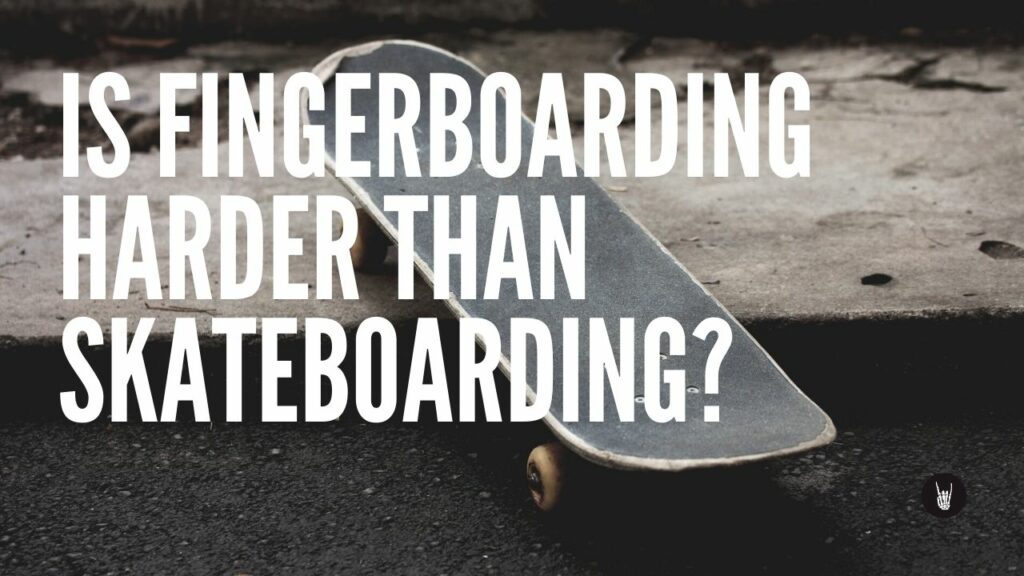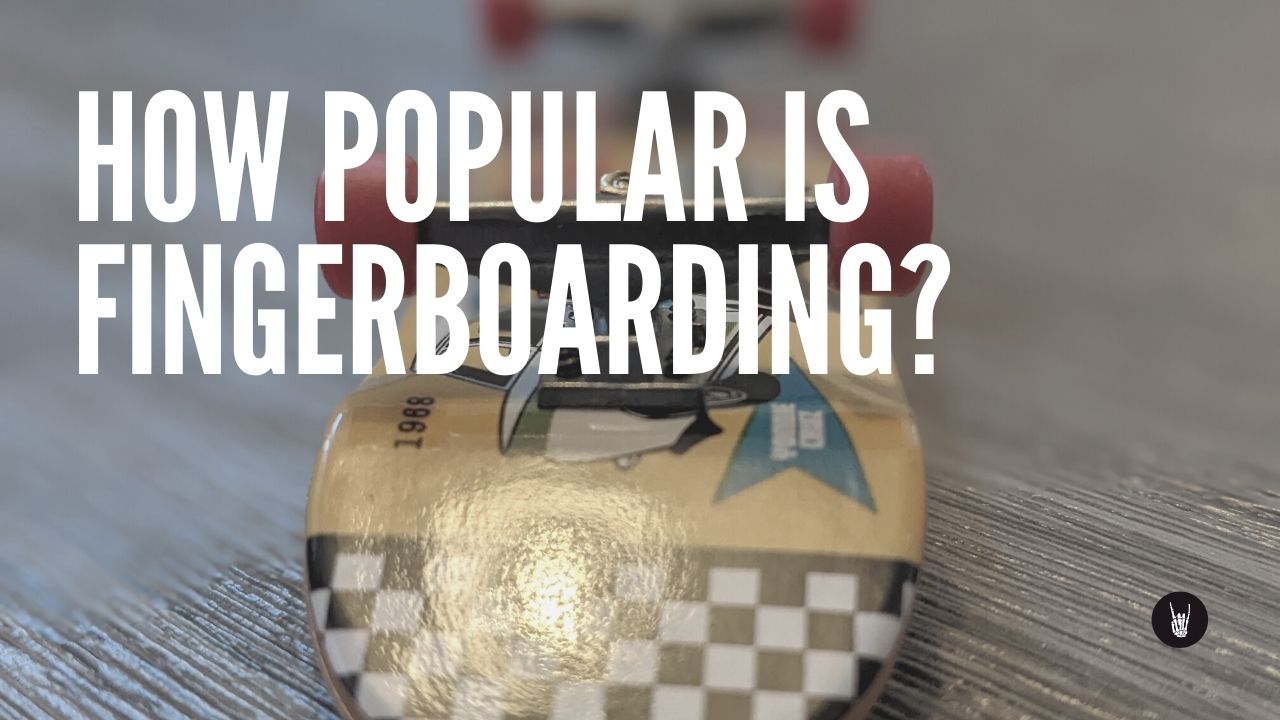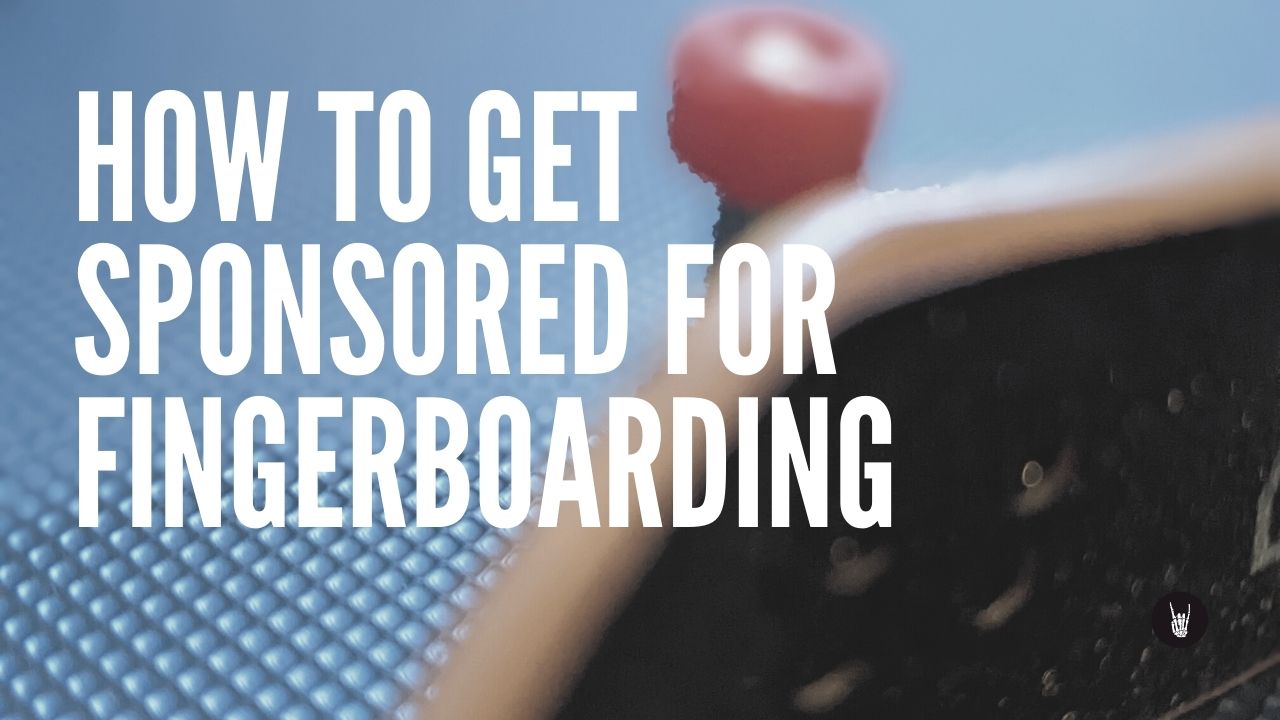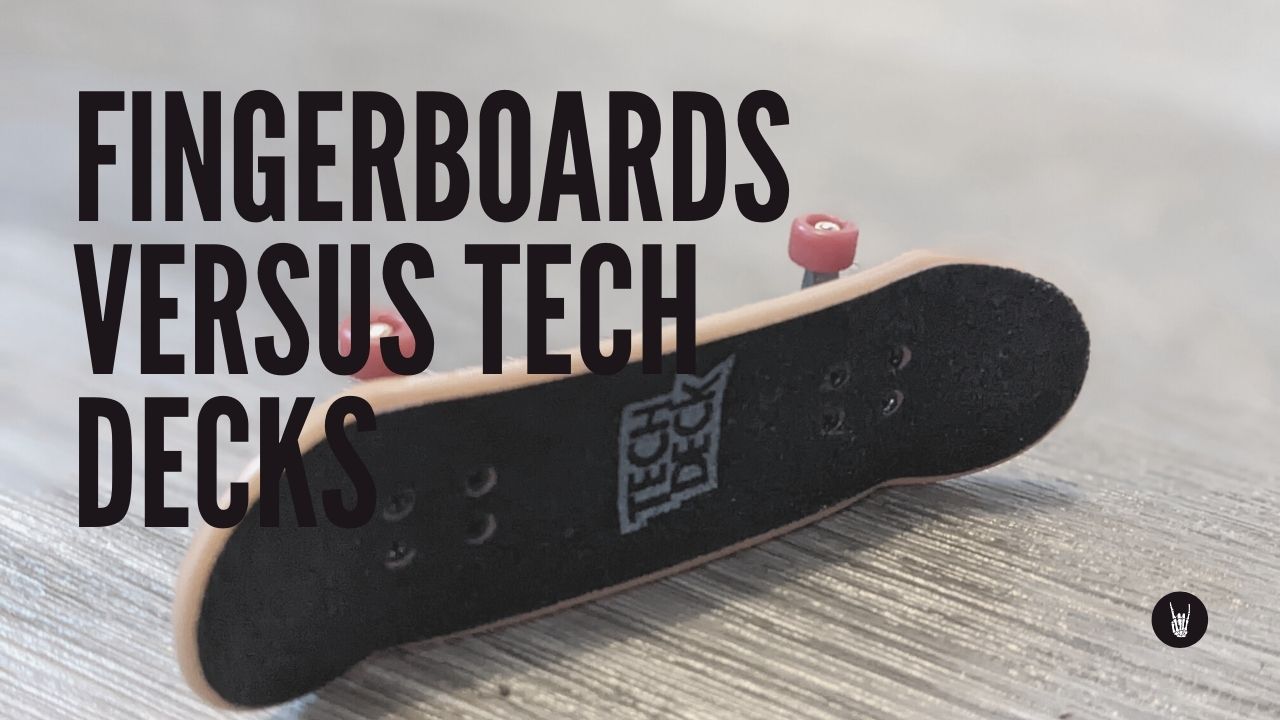A fingerboard is essentially a mini skateboard, and the more reputable companies make their fingerboards look just like the real thing. Fingerboarding involves learning dozens of tricks and moves by using only your index and middle fingers, so what could be difficult about that? While it sounds simple, the truth is that many of these tricks are very difficult and hard to learn.
Skateboarding has been around much longer and has some difficult moves just like fingerboarding does, which causes people to believe that the challenges are the same for both sports. But that isn’t necessarily the case.
Is Fingerboarding Harder Than Skateboarding? Skateboarding is much harder for beginners as the basics of moving and ollieing are harder, however the more complex tricks are harder in a fingerboard.

What Is Fingerboarding?
Fingerboarding can be done as a hobby or as a competitive sport, so the moves can get very complicated. It involves much more than just lightly placing two fingers on the deck (top) of the fingerboard and moving it around. While fingerboards are small and skateboards are large, the minute details you need to learn when executing maneuvers with a tiny fingerboard can present far more challenges than learning tricks on a skateboard. Does this mean that skateboarding is easy?
Absolutely not, but in many ways a fingerboard is a much more difficult device to learn.
There are dozens of tricks and moves to learn on the fingerboard, and just to give you an idea of how difficult some of them can be, here are descriptions of a few of those tricks:
• 5-0 grind on a rail. This one is difficult because it combines three tricks into one. Put your fingerboard on the rail, then put pressure downward using just your rear finger. You’ll see the fingerboard in the rail’s corner. Next, keep the fingerboard moving while keeping the pressure in the rear, then land the fingerboard with your front finger and the back edge of the board.
• Air tricks. With your middle finger, lift the front wheel by pressing the back edge of the board. With your middle finger, keep the board balanced. Next, press hard on the back of the board so it flies into the air. If you do this fast enough, the fingerboard returns to its four wheels. This one requires some practice!
• Manual. This is a must to learn when you want to improve your skills. Press the edge of the board with your middle finger, allowing the front wheels to hang in the air. Try to “ride” the fingerboard while it’s in this position. When you’re ready to stop, simply use the index finger to pull the board back to the ground.
Naturally, there are tons of tricks that are much more difficult than these. In fact, many people practice some of these moves for years before they are mastered. Growing your skills as a fingerboarder is usually harder than it seems.
Is Skateboarding Difficult?
Just like a lot of other sports, skateboarding is easy to learn but difficult to get good at. There are both easy moves and difficult moves with a skateboard, and one of the things that makes skateboarding more challenging than fingerboarding is the fact that you have to wear the right shoes – preferably canvas shoes with flat soles – wear protective gear such as a helmet and knee pads, and even find a place big enough to practice your skills. On the other hand, fingerboarding can be practiced in the privacy of your own home, which makes it easier to practice on a regular basis.
The moves and tricks for skateboarding involve larger motor skills instead of fine motor skills, so it is usually considered easier to do than fingerboarding. Both sports can cause injuries and pain due to repetitive actions, so they do have certain things in common. Both sports are relatively easy to learn, but it can take a long time to master the more challenging moves.
Conclusion
By most accounts, fingerboarding is more difficult to learn than skateboarding. There are certain advantages to skateboarding that don’t apply to fingerboarding – the main one being that you can practice fingerboarding almost anywhere – but as a general rule, the extreme attention to detail and the constant use of fine motor skills make learning how to fingerboard a big challenge for most people, at least in the beginning.
Of course, both sports can be mastered if you spend enough time practicing, and practice is definitely what it takes to get good at either of them. You may find that for you, skateboarding is harder than fingerboarding, but for most people the opposite seems to be true. In either case, they are both very fun sports that you can stick with and enjoy for many years to come.



